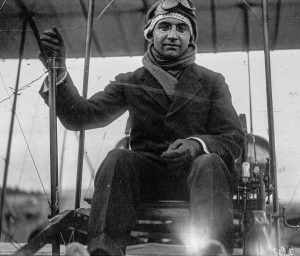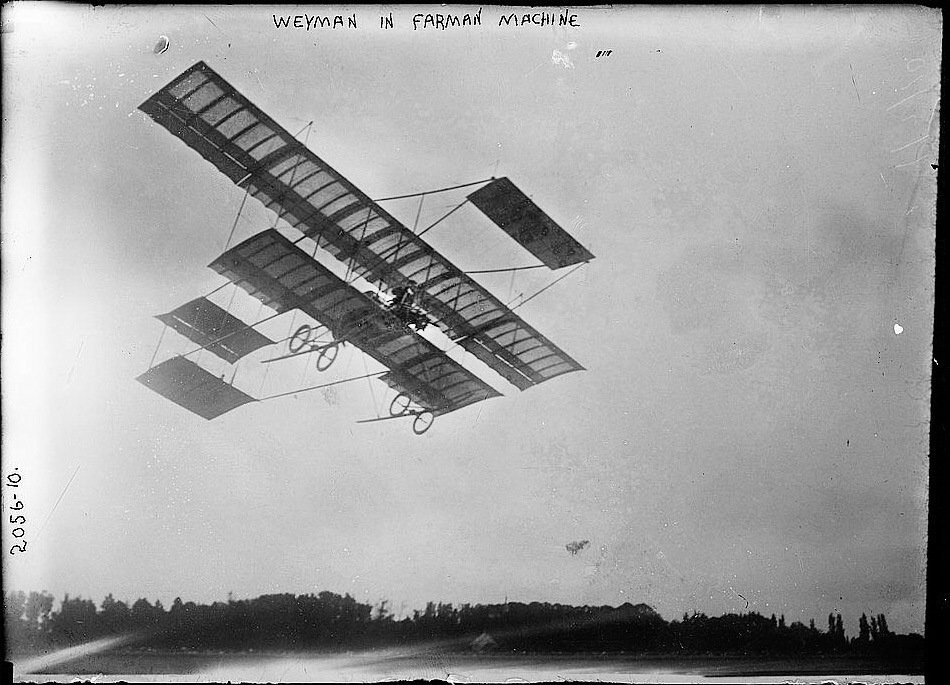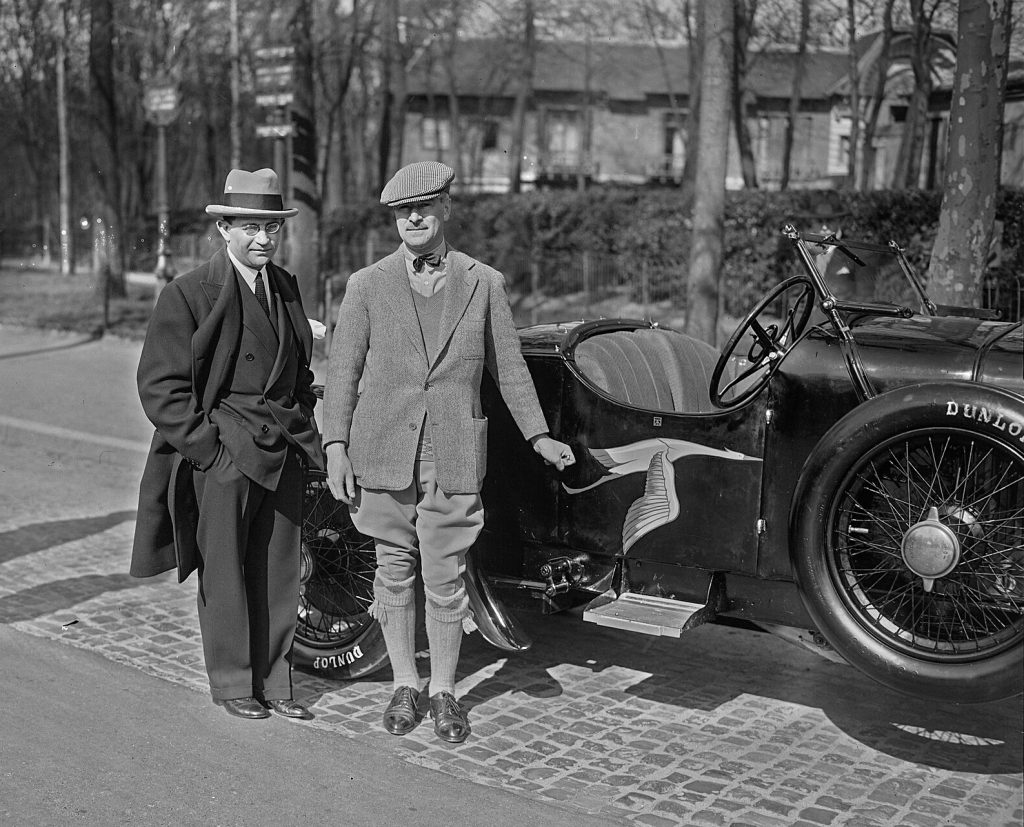
Photo info ...
(Aug. 2, 1889 – 1976). Haitian American aviator, inventor, and businessman Charles Weymann gained international fame as an aviator and manufacturer of fabric coachwork for automobiles. In the late 1920s, he established a factory in Indianapolis to manufacture his designs, which automakers like Duesenberg (see ) and used for their vehicles at a time when Indianapolis was a leader in luxury car production. While Weymann spent most of his life in France, his notable achievements with vehicle design, construction, and customization at his Indianapolis factory left a lasting impact in the early days of automobile development.
Charles Weymann was born in 1889 in Port au Prince, Haiti, to American father Charles Weymann and French-Haitian mother Cornélie Marie Miot. Due to his parentage, Weymann carried dual US and French citizenship, which allowed him to split time between both countries, and he became well known for various accomplishments in the US and France.
Weymann first gained acclaim in aeronautics. He learned to fly at the Nieuport School in Mourmelon, France, and received his pilot’s license from the Aero Club of America in 1909. As a young pilot, Weymann flew in the Circuit de l’Est, a six-stage air race organized by the newspaper Le Martin in August 1910. The race was significant in the early days of aviation for showcasing technological advancement in the field. By 1911, Weymann had broken several aeronautical records, and that year he won the third running of the Gordon Bennett Trophy held at Eastchurch, England.

By , he had begun work as a test pilot for Édouard Nieuport at his French airplane company. Weymann aided the war effort by flying fighter planes for France, earning him the French government’s prestigious Chevalier de Legion d’Honneur and Croix de Guerre.
After the war, Weymann applied knowledge of aircraft fabrication to devise a flexible wood-framed car body covered in fabric. His innovation, called the Weymann Silent Flexible Body, rendered vehicles more aerodynamic and fuel efficient. Weymann launched his invention at the 1921 Paris Motor Show, which grabbed the attention of European automakers. In 1922, Weyman opened his first automobile component factory and licensed his flexible body construction to allow other European automakers to use his design on their chassis. In 1925, he established Weymann Motor Bodies Ltd. to expand licensing in Europe and bring his patented design into the US market.

While in Europe, F. E. Moskovics, president of the Indianapolis-based Stutz Company, came across a vehicle with the Weymann fabric-body construction. Because Moskovics believed Weymann’s coachwork would be successful with US automakers, he agreed to purchase an unknown number of Weymann bodies for his new Stutz 8 motorcar if they could be manufactured in the United States.
In response to Moskovics’s proposition, Weymann in 1926 established the Weymann American Body Company in Indianapolis. He located his factory at the site of the former on East 22nd Street near the . Here, Weymann produced coach bodies mainly for Stutz, but also some experimental bodies for other luxury automobile companies such as Duesenberg, Cord, Packard, and Pierce-Arrow.
In 1927, Moskovics and Weymann devised a publicity stunt to draw attention to Weymann’s coach bodies. Weymann proposed to wager on a speed contest pitting a European car against the Black Hawk Stutz, then dubbed by some as “America’s speediest motor vehicle.” The race took place in April 1928. Weymann’s imported French Hispano-Suiza Type 116C handily beat the Stutz, which suffered debilitating engine trouble, in a 24-hour race at the . The $25,000 purse went to Weymann.

Weymann’s company operated in Indianapolis until the end of 1931. By this time, improvements in metal fabrication and high-gloss finishes had reduced the competitive advantages of fabric coachwork. Weymann’s career continued in Europe, where his firm had already started building single-deck wood and fabric flexible bus bodies in addition to fabric coach bodies in 1927. However, by 1932 demand for Weymann’s flexible fabric coach bodies dwindled in Europe just as it had in the US. In late 1932, Weymann halted all coach body production and established Metropolitan Cammell Weymann (MCW) to manufacture bus bodies. Though Weymann left the firm shortly after its establishment, MCW continued to produce bus bodies at his factory until 1966.
Both Weymann and engineers at MCW continued to innovate products for the aeronautic, automotive, and boating industries. Beginning in 1933, Weymann produced airplanes, such as the Weymann 66, and gyroplanes in partnership with Frenchman George Lepère for the Société des Avions CT Weymann. Engineers at MCW used Weymann’s factory to innovate and manufacture bus bodies. During World War II, MCW produced 1,500 Weymann bus bodies and 9,000 military vehicle bodies. In 1950, MCW used Weymann’s single-deck bus design to produce a prototype of the iconic London double-decker bus. London Transport used MCW’s innovative design to cover the AEC Routemaster double-decker bus from 1954 to 1968.
Charles Weymann died in 1976 in Paris, France. During his lifetime, Weymann had developed a successful alternative to the then-existing coachwork for luxury vehicles, leading to lighter, quicker, and quieter automobiles. His innovations spurred competitors to improve upon his lightweight bodywork with metal bodies that ultimately rendered Weymann’s coachwork obsolete. Still, during his company’s heyday from the mid-1920s to early 1930s, Weymann made significant contributions to Indianapolis’s economy and to the history of automobile manufacturing.
CITE THIS ENTRY
APA:
Meeker, L. (2025). Charles Weymann. Encyclopedia of Indianapolis. Retrieved Dec 5, 2025, from https://indyencyclopedia.org/charles-weymann/.
MLA:
Meeker, Liana. “Charles Weymann.” Encyclopedia of Indianapolis, 2025, https://indyencyclopedia.org/charles-weymann/. Accessed 5 Dec 2025.
Chicago:
Meeker, Liana. “Charles Weymann.” Encyclopedia of Indianapolis, 2025. Accessed Dec 5, 2025. https://indyencyclopedia.org/charles-weymann/.

Help improve this entry
Contribute information, offer corrections, suggest images.
You can also recommend new entries related to this topic.